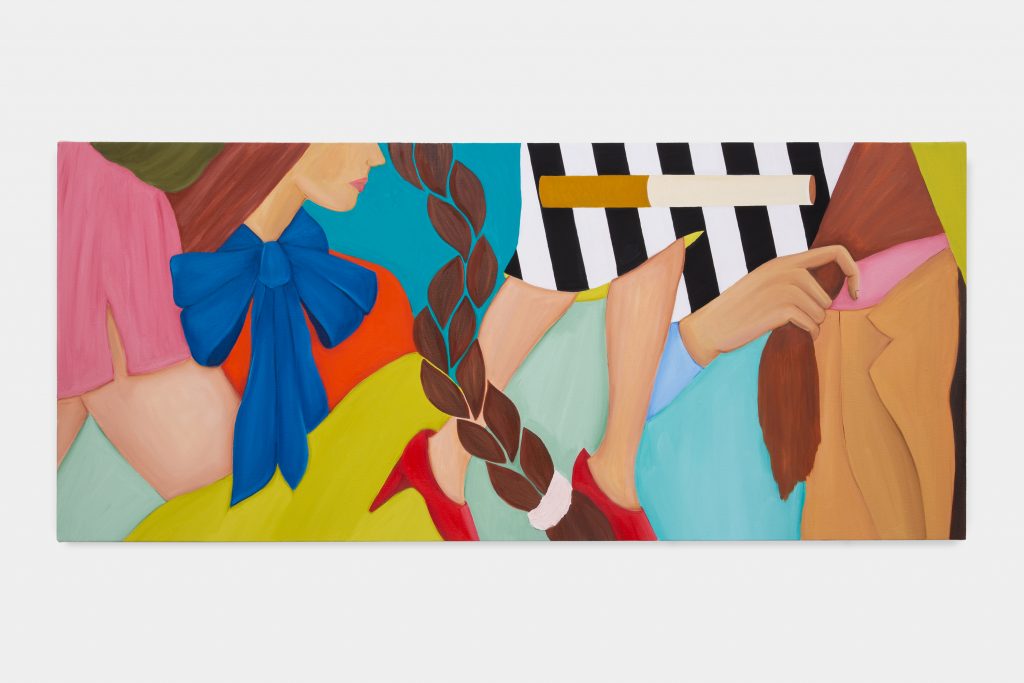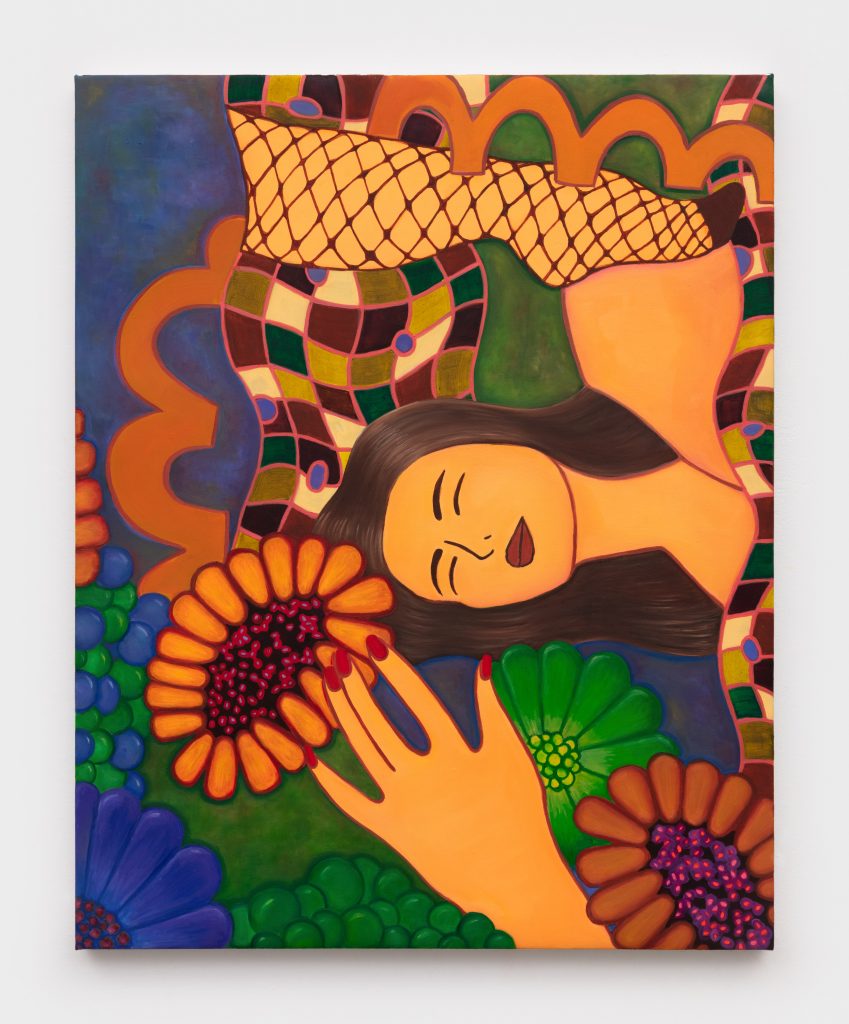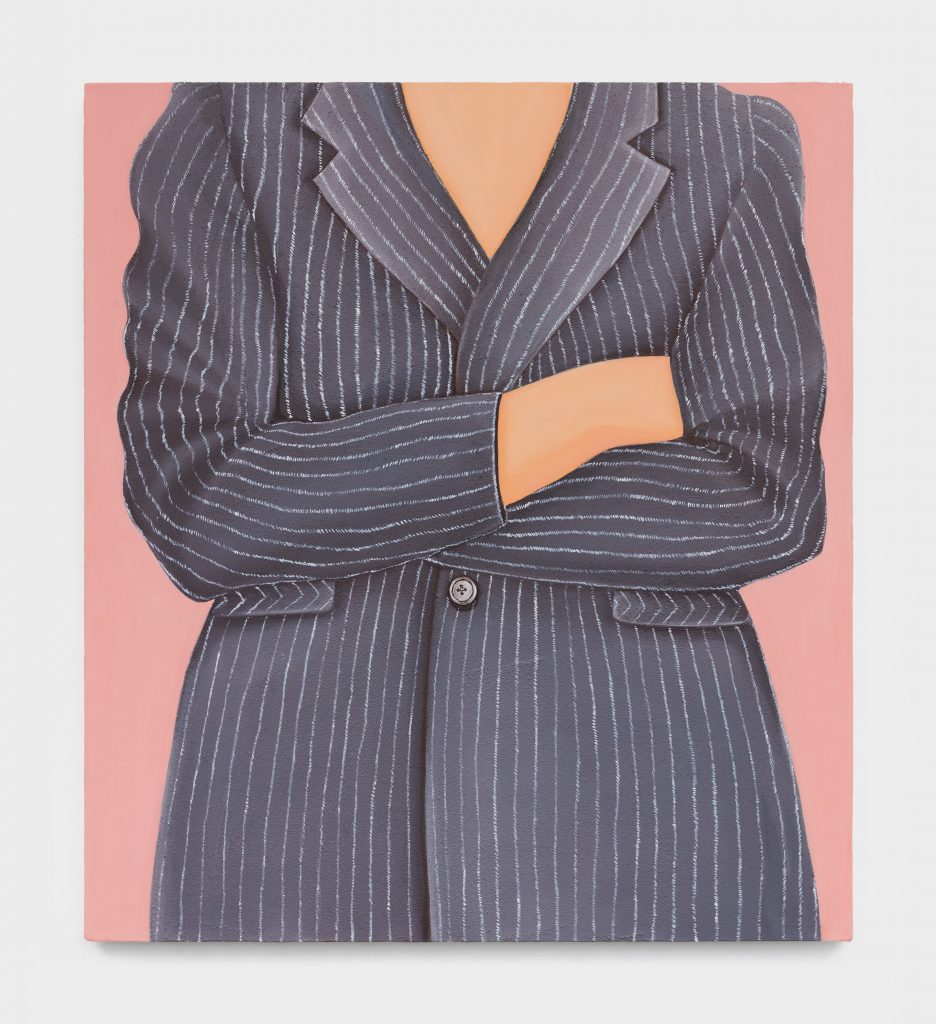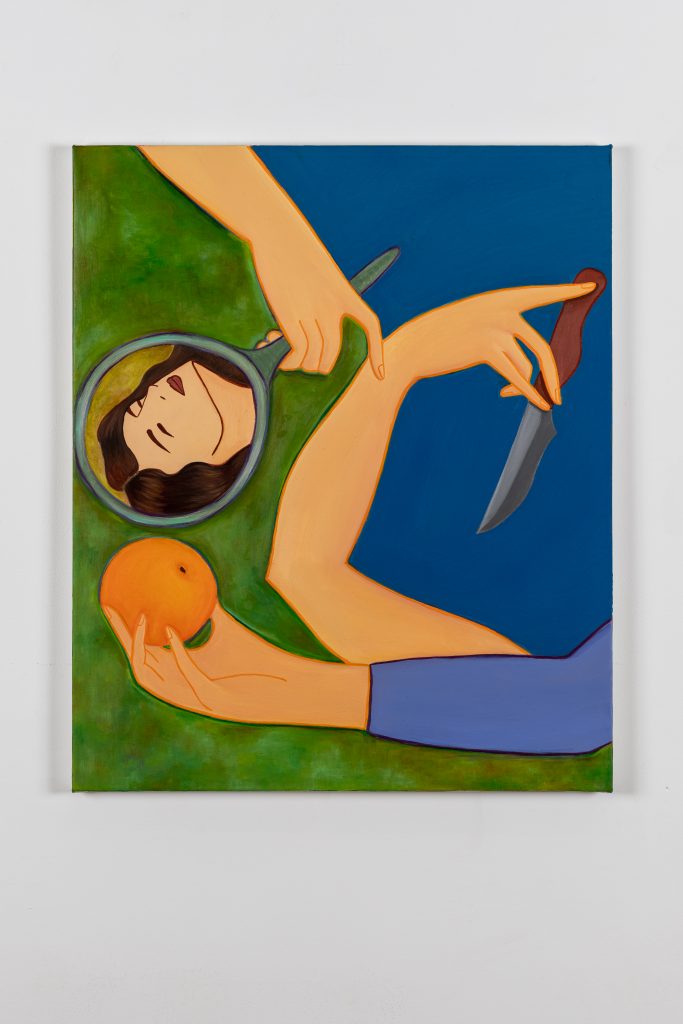Elana Bowsher (b. 1990) is a Los Angeles-based artist whose feminine style paintings often depict the female form in graceful gestures with dreamlike compositions. Incorporating feminine-associated clothing and other earthly pleasures, Bowsher paints graphic iconography in her own language, thus offering the viewer a new outlook on otherwise ordinary objects.

Tell us a little bit about yourself. Where are you from originally and when did art first enter your life?
I’m from San Francisco. I have always been around art – dance, music, theater, fine art – everything. My parents are arts appreciators, and my uncle, John Bowsher, who passed away in 2014, worked at LACMA, MOCA, Dia Beacon and several other institutions throughout his life. We often visited him to see the shows he worked on. Growing up, I was a serious ballerina, until I quit when I was eighteen to attend UCLA for Fine Art. I credit my persistence and discipline to my years of ballet.
I mainly focused on ceramics and sculpture at UCLA, and I worked for the artist Shio Kusaka after graduation. While I still make ceramics, I began to focus more seriously on painting through the encouragement of artist friends who saw sketches of images I planned to paint onto my ceramics. Everything has blossomed from there.
What’s a day in the studio like for you?
First thing I do in the studio is meditate. I use the Waking Up app. It’s ten minutes a day, and I started in August 2020 during quarantine. Sometimes it’s incredibly difficult to keep my eyes closed and to not stare at my paintings, but either way, it’s an important moment for me to get focused.
Then I usually begin with a drawing or a watercolor, unless I’m under a deadline and need to complete a specific work. I make a lot of drawings and watercolors without thinking about if they’re “good.” I decide if they will make paintings from them (or versions of them) after I get a fresh look at them the next day. I would say that I don’t actually get into the part where I’m lost in the work and thinking about fun things like color or texture until later in the day, around 2:00 PM. I listen to true crime, psychology and interview podcasts all day. Sometimes they give me ideas.

What’s next for you?
I just showed several new paintings and watercolors at FOG with Alexander Berggruen, and in April, I’ll have my first solo show with him in New York. I’m also looking forward to participating in a group show in Hong Kong in March and one in Europe this summer – my first opportunity to exhibit outside of the US.
From where do you draw inspiration?
I try to be very open. I get inspiration from other artworks, literature, photos I’ve taken, relationships I have, fashion, psychology…it runs the gamut. I also draw a lot of inspiration from conversations with fellow artists. Lately, I’m in constant conversation with a close friend and famous novelist Chloe Benjamin. She’s a brilliant writer and thinker, and we don’t always necessarily discuss art, but we’re in dialogue about articles or books we’ve read, podcasts we love, things we find hilarious and also more serious ideas like what it means to be an artist today – basically we cover everything and anything. I get a lot of motivation from those conversations. We usually leave voice memos for each other.

Have you always painted in the style your work currently inhabits? Has your work always taken on the style it currently embodies?
No. My style is ever evolving. I never want that to stop. However, my work has always carried a similar attitude: one of joy, movement, and hopefully a bit of humor. Maybe this attitude is best expressed with the tondo paintings of the butts, which are based on historical nude paintings that I’ve stylized, cropped and made my own.
In a podcast interview of chef Mina Stone who cooked for Urs Fisher, she observes that Urs Fisher’s work is humorous, and she says that within the humor there’s a deep-rooted sentiment hidden inside. When she said that I immediately thought – that’s the richness I want for my work!
What source material do you base your work off of?
Sometimes an idea comes from another artwork, sometimes it comes from the way I combine several drawings together, and sometimes it will come from a very specific idea that I want to express. Usually when I imagine what a painting will look like in my head, it doesn’t work out though. Things go smoothest when I let the paint guide me, instead of trying to control the entire process.

Does your work reference any Art Historical movements?
I look at artists from all historical moments and time periods – I don’t restrict myself. I just pulled up my phone to see whose works I’ve screenshot or saved recently (which doesn’t necessarily mean I reference them, but simply means I love them or something about a specific work): Cezanne’s works on paper from the MOMA show, Domenico Gnoli from the Fondazione Prada show, Gertrude Abercrombie, Silke Otto-Knapp’s dance paintings, and Sanya Kantarovsky because he uses watercolors beautifully, and I just finished a commission for some works on paper for the brand Hermès.
What is your process like? How do you begin a work?
I make a lot of drawings. I choose the drawings I like best and play with them, whether that’s cropping one so you see it in a new light or combining several drawings in weird ways with my projector in order to create a new narrative.
Right now, I’m working on bigger paintings for my solo show, but I still begin with small studies. I always work on several paintings at once.

At the end of every interview, we like to ask the artist to recommend a friend whose work you’d love for us to interview next. Who would you suggest?
Daisy Sheff and Adam Alessi